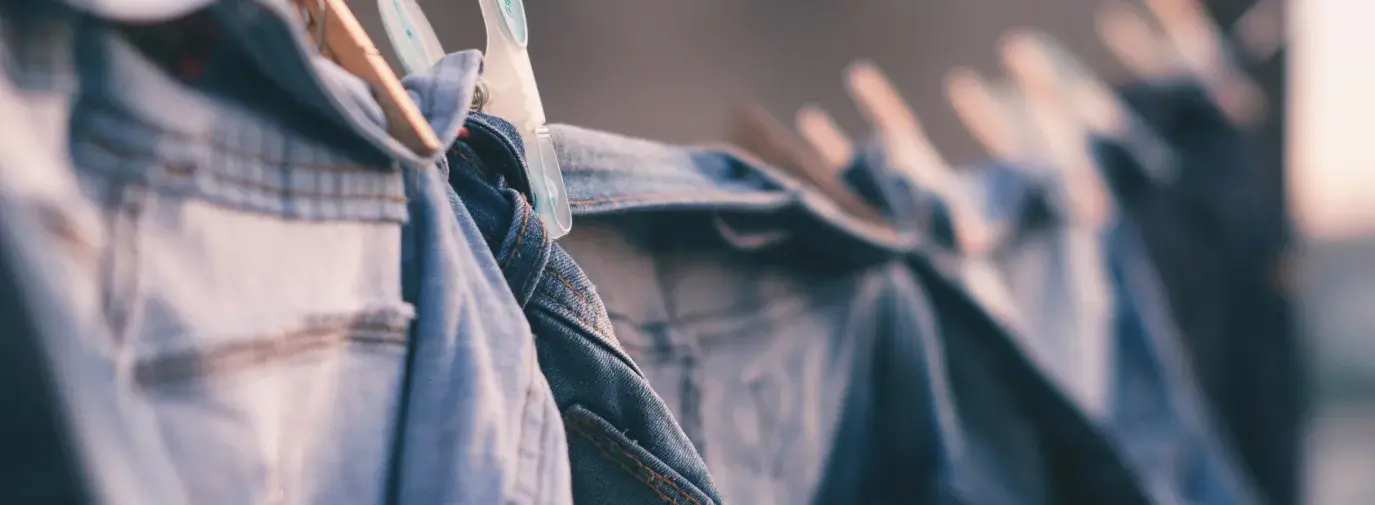
Updated February 2023
Back to the Vote With Your Dollar Toolkit
It’s no secret that sweatshops are behind much of the clothing sold today. The media and nonprofits overseas report on factory bosses paying starvation wages, forcing employees to work unpaid overtime, denying bathroom breaks and sick leave, and retaliating against workers who seek better treatment. Such practices may lead to cheap clothing on the consumer end, but more shoppers are saying that they don’t want low prices to come at the expense of workers—in the US and around the world.
Here are ways to steer your clothing dollars toward companies with fair labor practices, avoid some of the worst sweatshop-labor-using companies, and create a system that respects workers’ rights.
6 Steps to Sweatshop-Free Clothing
1. Reduce and Reuse
One way to keep your clothing dollars from enriching companies that use sweatshops is simply to buy less clothing overall. When you’re considering a clothing purchase, ask yourself whether you really need the item.
Secondhand clothing is a great option for people who want to avoid supporting sweatshops—and for people who are budget-minded and eco-conscious, too. Check your local Yellow Pages or Google Maps for thrift or consignment stores, and check your local paper for listings of yard sales featuring clothing. You can also organize a clothing swap in your office or community.
When purchasing necessary, new items, look for clothing that you’ll be able to wear over and over again. Choose high-quality items that fit your personal style, and then care for them properly so they last.
2. Buy Fair Trade
When you buy a hand-knit sweater or shawl from a conventional retailer, chances are that it passed through several middlemen and left the person who made it with a small fraction of the purchase price. Under the Fair Trade system, artisans sell directly to wholesalers or retailers and earn fair payment for their products. When you buy Fair Trade clothing, you’re supporting a system that provides fair wages and healthy working conditions to economically disadvantaged artisans worldwide. You’ll also get unique and high-quality items, such as hand-crocheted, organic cotton sweaters from Indigenous, made by artisan cooperatives in Peru and Ecuador.
There is currently no US Fair Trade label for clothing, as there is for items such as tea and coffee, but there may be in the future. Fair Trade textiles, labeled and certified by the European organization Max Havelaar, became available in Europe last year.
3. Beyond "Made in the USA"
Another way to find clothing that hasn't been made in sweatshops is to look for the UNITE label, which means the garment was made by members of UNITE HERE (the union created from the merger of the Union of Needletrades, Industrial and Textile Employees and the Hotel Employees and Restaurant Employees International Union).
“When something has a union label, it means the workers who made it have a voice—a way to deal with problems on the job without fear of getting fired, reprimanded, or retaliated against,” says Amanda Cooper of UNITE HERE. “They’ve negotiated an enforceable contract with their company that covers wages and benefits, safety on the job, and production standards.”
The union label is a much better indicator of fair labor conditions than the “Made in the USA” label is. First, explains Trina Tocco of the International Labor Rights Fund (ILRF), there are many illegal sweatshops operating within the US and in US territories; also, it’s likely that a non-union “US-made” garment was produced overseas and only had the finishing touches, like buttons or embroidery, applied in the US.
UNITE’s website includes a “Union-Made Apparel Directory” that lists companies selling union-made clothing and specifies which of their items are union-made.
4. Check the Source
You can also look for clothing from companies that operate responsibly. Some companies are, or source from, cooperatives, which allow workers to organize themselves democratically and have ownership in their businesses. Cooperatives may also benefit disadvantaged individuals.
Companies like Patagonia are starting to include sourcing on the individual item's page. It's a step in the right direction for accountability, and normalizes transparency for buyers.
Many cooperatives also demonstrate concern for the environment as well as their workers, using organic materials and low-impact manufacturing methods. For instance, Esperanza Threads is a Bedford, Ohio, cooperative that employs low-income individuals in manufacturing organic-cotton clothing.
Maggie’s Organics is a Michigan-based business that buys much of its organic-cotton clothing from the Nicaraguan cooperative Maquiladora Mujeres.
5. Do a Little Digging
Keep in mind that large clothing companies often work through dozens of subcontractors and can change suppliers from one month to the next in search of lower prices or faster turnaround times—which often come at the expense of workers’ rights. If digging results in a long history of news reports linking a retailer to sweatshop violations, you can assume that the company puts profit before fair labor standards.
“It’s hard to find companies producing completely responsible garments,” explains Tocco, “because there are so many stages in the supply chain: gathering raw material, spinning it into cloth, dyeing the cloth, and cutting and sewing the garments. You could have a union-made garment made of cotton picked by a child laborer.”
The better companies will have codes of conduct ensuring worker rights (including freedom of association and freedom of harassment as well as fair safety, wage, and hour standards); use independent monitors to check factories’ compliance with the code; report publicly on the monitors’ findings; and work with factories found in violation of the code to get into compliance. It’s also a good sign if a company is purchasing from supplier factories where workers are represented by an independent union and have collective bargaining arrangements in place, and if the company stays with these factories for a long time.
The better companies will be able to answer your questions about sweatshops, codes of conduct, and related issues with specifics if you call or write to them.
6. Change the System
While good clothing options do exist, there are far too few; we’ll need to work together to create more. Green America challenges shoppers to buy five responsible clothing items (Fair-Trade, union-made, or cooperative-made) this year, and to make sure any clothing gift purchases are responsible, too.
Let companies know you're concerned about labor practices. If you're replacing old jeans with a union-made pair, tell the company you used to buy from why you're making a switch, and what they need to do to win you back.
If companies hear enough consumers questioning their labor practices or taking their business elsewhere because of labor violations, they’ll know they need to address these concerns.
You can also pressure clothing companies to become more responsible by getting large institutional purchasers to demand sweatshop-free clothing made under fair labor conditions. Thanks to the work of student activists, more than 100 colleges and universities have joined the Worker Rights Consortium (WRC), a nonprofit that helps the schools ensure that the suppliers making products that bear the school’s logo are respecting workers’ rights. Contact the WRC or United Students Against Sweatshops to learn about getting your college or university involved.
Sweatshops are a deep-rooted global problem, but solutions are emerging as workers and consumers demand a better system. Buy the best, sweatshop-free clothing you can today, and act to create a better future for garment workers around the world.







